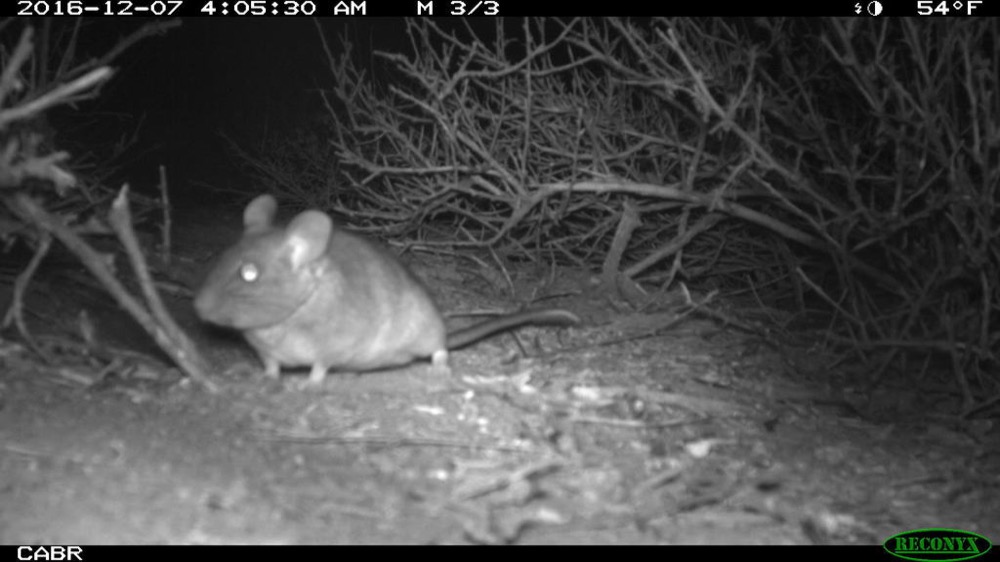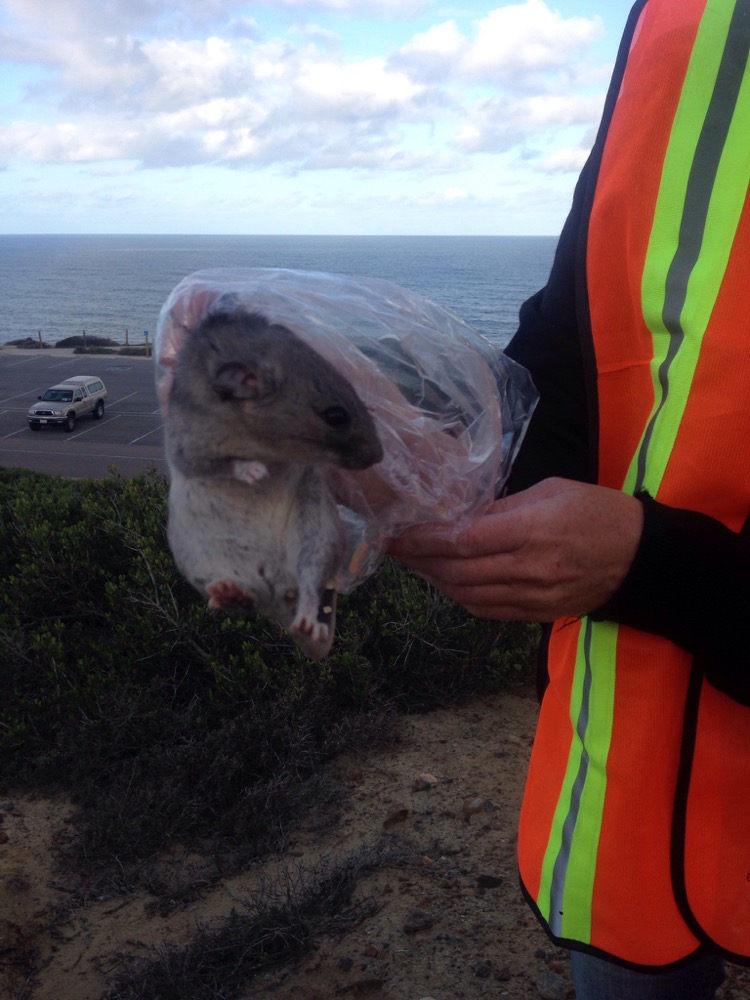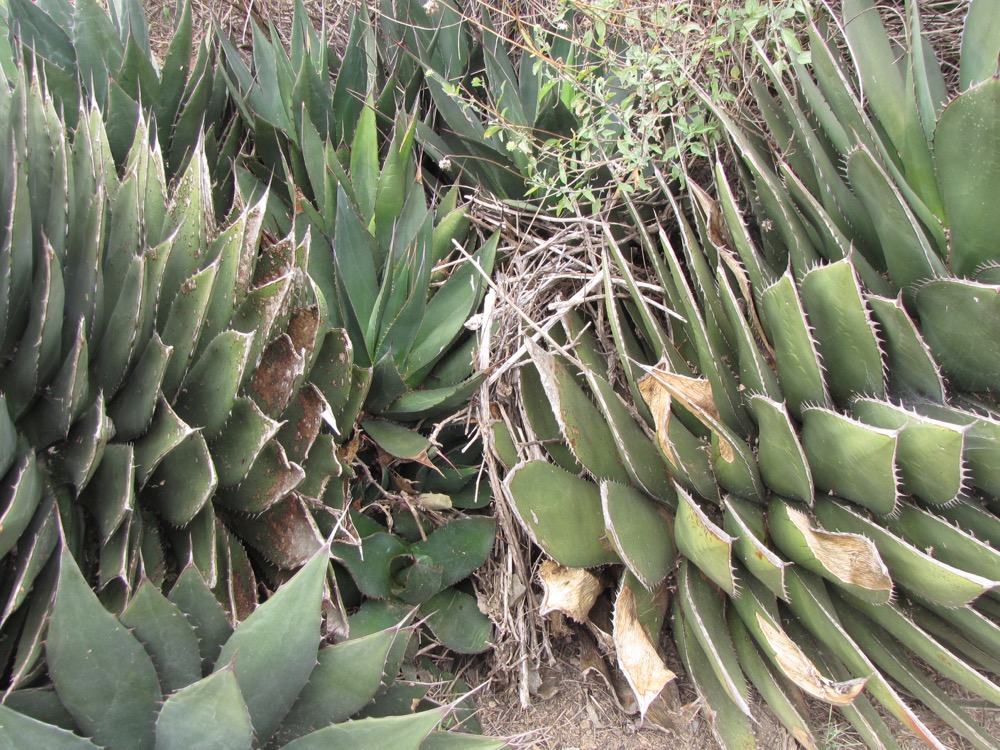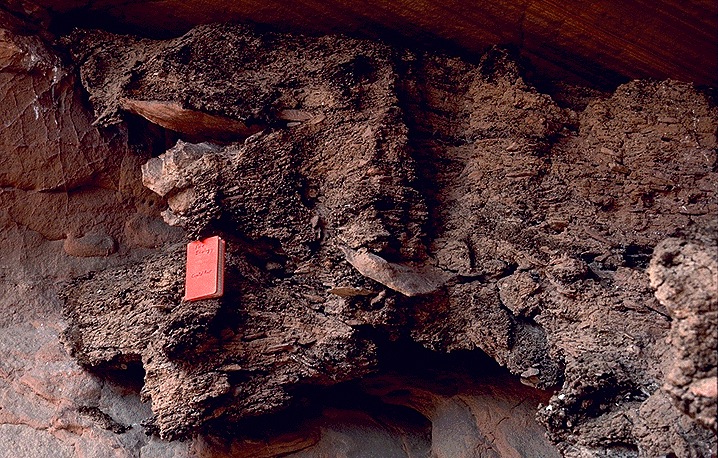 NPS Photo/Cabrillo National Monument – A local woodrat caught on camera in the early morning at Cabrillo National Monument
NPS Photo/Cabrillo National Monument – A local woodrat caught on camera in the early morning at Cabrillo National MonumentWoodrats, also known as packrats, are a pretty common resident in San Diego’s natural open spaces. They aren’t true rats like the ones people typically see in the city. These ones are more closely related to mice and are much cuter-- with large, stout bodies and big, round ears. You wouldn’t really know it since they are super secretive and are active when the sun is down.
 NPS Photo/Patricia Simpson - A woodrat caught during small mammal trapping for the 2016 Bioblitz in Cabrillo National Monument.
NPS Photo/Patricia Simpson - A woodrat caught during small mammal trapping for the 2016 Bioblitz in Cabrillo National Monument. How can you tell if a woodrat is around? A really obvious sign is their large nests! These are made up of local material which mostly includes plants, but other items include bones, shiny things (often human trash), and shells. It is very intricate with several tunnels and cavities to sleep and store food in. Other animals like to use the nests that the woodrats build too! The desert shrew is one animal that loves these nests, often occupying some space without the woodrat minding. These nests are so large and intricately built that they are used for several generations. The nests found at Cabrillo National Monument are typically built into the base of large shrubs that protect them from invaders and predators, such as the grey fox. They are also commonly seen built into clusters of Shaw’s agave rosettes. The large, extremely pointy and pokey leaves add an extra level of protection from predators. It doesn’t hurt that agaves provide the woodrats with moisture during the driest times of the year – the evidence they leave behind are characterized as large chunks of agave leaves and shoots chomped away by the thirsty woodrats.
 NPS Photo/Kaye London - A woodrat nest found within a cluster of Shaw’s Agave rosettes.
NPS Photo/Kaye London - A woodrat nest found within a cluster of Shaw’s Agave rosettes.Another such part of the nest den is called the midden, where the woodrat uses the restroom and dumps other materials it doesn’t need. These are basically a garbage dump for the woodrat. Middens can also give us a look into the past! Researchers can excavate middens that have fossilized and determine what plants and other material the woodrats were around long ago, usually within 100 meters of their nests. Plant fossils within the middens can often be identified to species. This information has been extremely useful when comparing vegetation composition of today versus hundreds or thousands of years ago! These middens are more commonly found in desert caves and crevices.
 USGS photo/Kenneth Cole - An example of a very large woodrat midden.
USGS photo/Kenneth Cole - An example of a very large woodrat midden.For more information on research conducted on woodrat middens:
Cole, Kenneth L. 1990. Reconstruction of past desert vegetation along the Colorado River using packrat middens. Palaeogeography, Palaeoclimatology, Palaeoecology. 76, 349-366.
